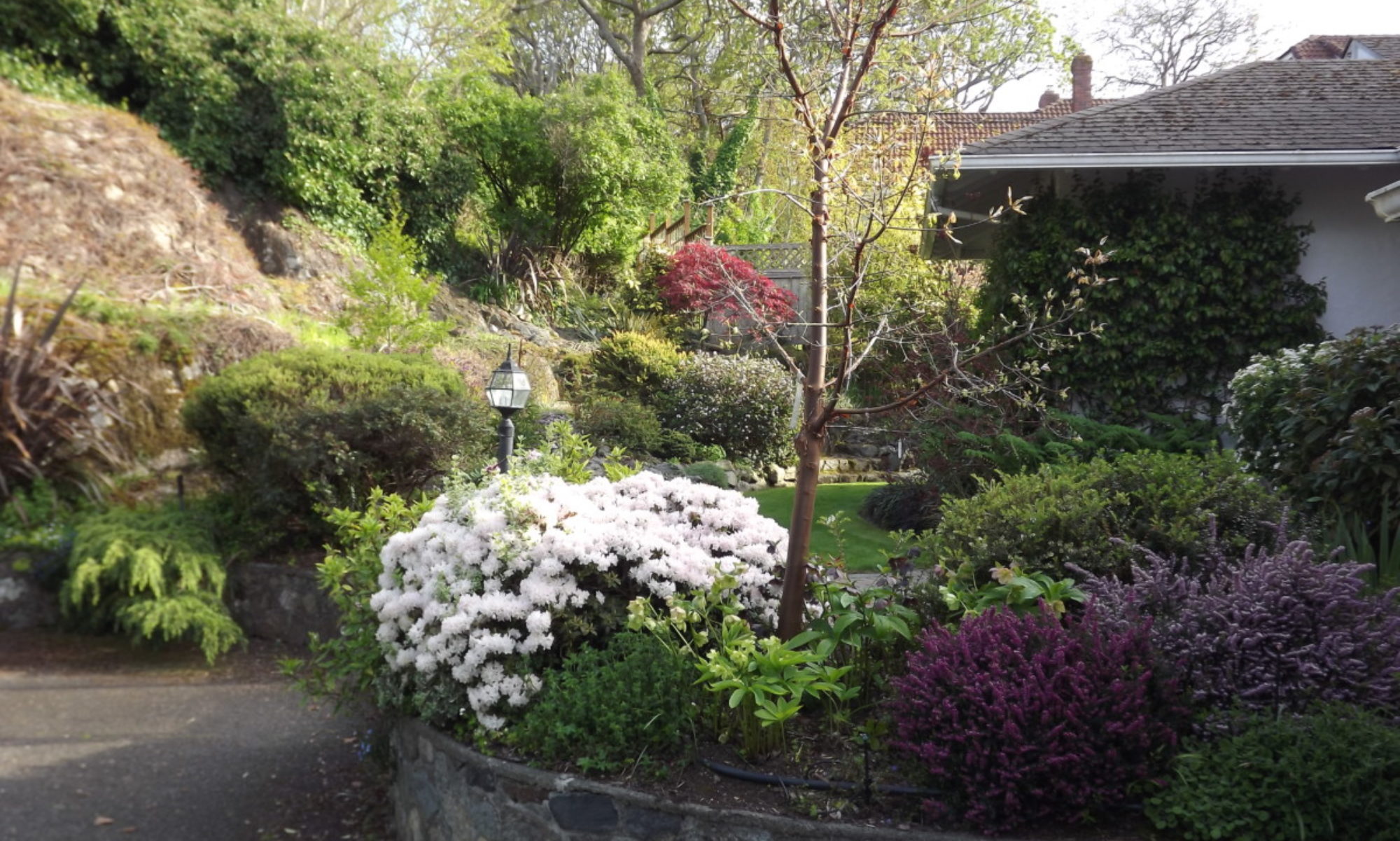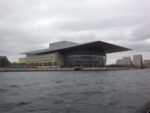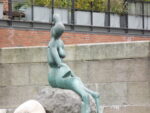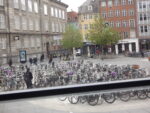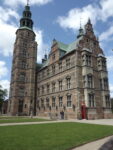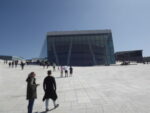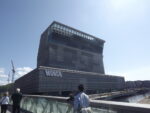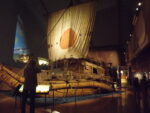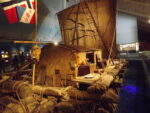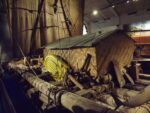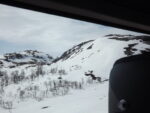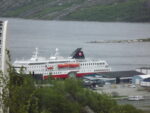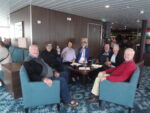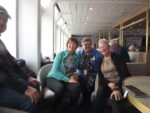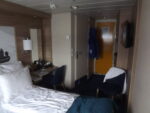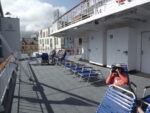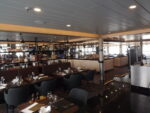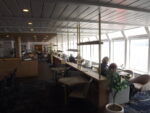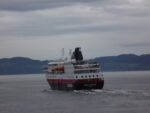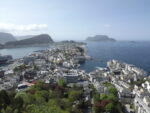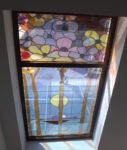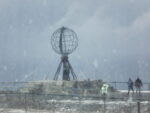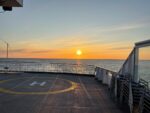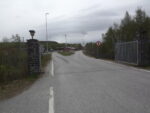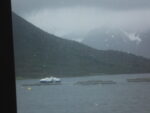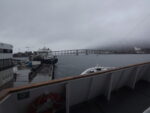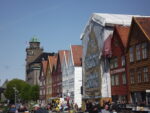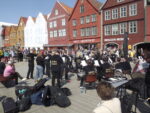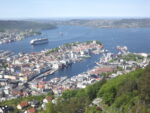This section written about 25 May:
We have now completed phase one of our Scandinavian trip, having just spent three days in Copenhagen and three days in Oslo, taking the large overnight ferry to connect them. Although, of course, the time was far too short to have done any in depth exploration, here are some of our impressions. The weather has been absolutely ideal and here, in countries that are so far north that the winters are long, cold and dark, everyone seems to celebrate the coming of summer, getting out and about on foot, scooters and bicycles. Cycling is so much a part of life that here the concept of the 5-minute city has been easily achieved. There were very few private cars in the downtown core. We felt that the Danes and Norwegians are so far ahead of us in cutting down emissions – the cabs are all electric, many Teslas, huge wind farms, lots of public transport. Downtown was clean and safe with no evidence of homelessness, mental health issues or drug use. The schools teach English from first grade so the population is bilingual.
In Copenhagen we had an Airbnb very centrally located, across the road from a very high-end shopping centre, with three restaurants on the roof. The street was pedestrianized and full of young people. The city is an interesting combination of historical buildings, erected when Denmark was a very wealthy and very futuristic high rises. The high spot of our time here was a 2-hour small canal boat tour round the city just for us and our friends. Our leader/pilot was a recent graduate in history and philosophy who gave us such an interesting commentary and answered all our questions. In Oslo, we stayed in a hotel just steps from the waterfront, a happening place, with cruise ship terminals, ferry docks and a wide variety of restaurants. We took a ferry to the Fram and Kon Tiki museums, which were fascinating and so well presented. We also visited the beautiful and very futuristic Opera House and the Munch Gallery. Probably the high spot was our meal with Don and Meg at a Michelin recommended fish restaurant on the Quay.
The train from Oslo to Bergen was very efficient (6 1/2 hrs) through spectacular scenery and going well above the snow line with lakes still frozen over. We are now on the ship and united with Don & Meg and Meg’s cousins Jan and Ronnie with Jan’s husband Dave. It seems a very nice ship with less than 500 passengers, excellent food and, so far, very usable weather.
The following part written about June 4th:
The second part of the blog is a description of our trip on the MS Richard With, one of a large fleet of boats run by Hurtigruten to supply all the little isolated towns along the Norwegian coast north of Bergen – a boat leaves Bergen almost every day for the 12-day voyage. As luck would have it, we were on board to celebrate the company’s 130th anniversary. Richard With, its founder, dedicated his career to developing trade in the high Arctic and later went into politics to further his aims. Now this area can export its fish and LNG and has government support to attract more population to the area.
We boarded the ship in Bergen in bright sunshine and found our cabin on Deck 5, the promenade deck. It was compact, but had lots of storage and everything we needed. We met the rest of our party, Don, Robin’s brother and wife, Meg, her two cousins, Ronnie and Jan and Jan’s husband, Dave. Our group of seven had many Happy Hours together and Don organized a special dinner for us all to celebrate Meg’s 78th birthday. Meals aboard were buffet for breakfast and lunch and a three-course dinner at 7:30. The food was delicious and very Norwegian oriented with an emphasis on local produce and lots of fish, smoked, pickled, in soups, salads and main courses.
The ship was two thirds full and the majority of our fellow passengers were German, though we did find some Canadians, Australians and Scots. The ship had 33 ports of call on the way north (& again going south) but many of them were very short and during the night. During our first two days at sea, the sun shone and we had longer stops in Alesund and Trondheim, when we had time to leave the ship and explore these prosperous and interesting towns. Unfortunately, as we travelled North and crossed the Arctic Circle the weather changed and rain, hail, snow, sleet and high winds were the order of the day. Don, Meg and I signed up for a 2-hour seaside walk and were toasty warm in all our thermal gear. The wind, however, was so strong I had trouble staying on my feet and the hail felt like buckshot. Similarly, our next shore excursion was to the North Cape, the most northerly point in Europe. The bus took us to the tourist centre, which, fortunately had lots of indoor activities like a movie and exhibits. Going outside to the various points of interest was again a struggle not to be blown over and was barely visible through the mist and rain/sleet. At Kirkenes, our most northerly stop, I was very interested in the excursion to the Russian border, which turned out to be a non-event as there was nothing happening, only a gateway that we were warned not to cross and a stretch of deserted no man’s land. What was extremely interesting was a stop at the large bomb shelter in Kirkenes. Our local 84-year-old guide took us through the town’s history during WW2 when it was the most bombed area, second only to Malta. The area had great strategic value as the nearest ice-free port to the strategically important town of Murmansk. The Kirkenes townspeople spent months in the bomb shelter and, when it was safe to emerge, there was nothing left of their town. The Norwegian government did nothing to help them but the Russians came to their aid to rebuild. The locals still have a great affinity for the Russians and distrust of the Norwegian government and this border crossing used to be an open border with no visa requirements. The Ukraine war has changed things considerably and there is now very little trans-border crossing.
At Kirkenes we turned southward and, unfortunately, the weather did not improve and many of the excursions were cancelled. This was most unfortunate as we were travelling through the Lofoten Islands and accessing narrow fiords with rain and the clouds often down to less than 100m.. What we did manage to see rather surprised us. Due to the glaciers in the last ice age the mountains are very rounded and not very high so the scenery was not nearly as dramatic as, say, sailing up Howe Sound or the Inside Passage. a lot of the voyage was through waterways reminiscent of the the Gulf Islands. There were lots of little villages and lots of activity at the ports we stopped at. There was a bonus in that the skies cleared on a couple of nights so that we did see the midnight sun.
Our final shore excursion was to see part of the Atlantic Road that the Norwegian government used some of the oil revenue to build. It connects a series of islands with bridges and tunnels and is reputed to be one of the world’s most beautiful drives and was featured in a recent James Bond Movie.
As soon as we crossed the Arctic Circle heading to Bergen the weather really improved and we docked in bright sunshine. We had had three nights in Bergen and the weather was superb, a real bonus as it has a reputation for being the wettest city in Norway. There was a music festival happening and the colourful and historic waterfront area has been thronged with people obviously relishing the warmth and sunshine after the long, dark winter and late spring.
We were both very impressed by Scandinavia and can quite see why the Danes are deemed the happiest people in the world. There does not seem to be much crime in Norway and we were very interested to learn that the Norwegians leave their ski chalets in remote areas unlocked in case fellow travellers need shelter from the elements. Norway can teach both Alberta and the UK a lesson on how best to profit long term from oil revenue as there is a legacy for future generations. While we enjoyed spending the time with our friends and relatives on the boat in retrospect only going one way would have been a better option. That would have given us the opportunity to add Sweden or Finland to our itinerary to enjoy even more of Scandinavia.
